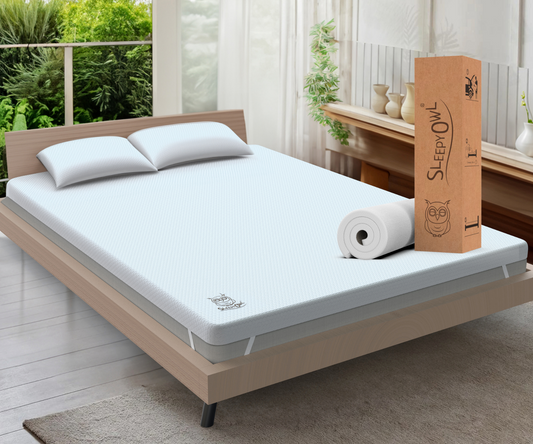Best Sleeping Positions for Hip Pain While Pregnant
Pregnancy is a transformative journey that brings about numerous physical changes, many of which can lead to discomfort and pain. One common complaint among expectant mothers is hip pain, which can arise due to a variety of factors. As the body prepares for childbirth, hormonal changes occur, particularly the release of relaxin, which helps to loosen ligaments and joints in preparation for delivery.
While this is essential for childbirth, it can also lead to instability in the hip joints, resulting in discomfort or pain. Additionally, as the pregnancy progresses, the growing uterus exerts pressure on surrounding structures, including the hips. This pressure can lead to misalignment and strain on the hip joints, exacerbating any existing discomfort.
Weight gain during pregnancy can also contribute to hip pain, as the additional weight places extra stress on the joints and muscles. Understanding these underlying causes is crucial for pregnant women experiencing hip pain, as it can help them identify effective strategies for relief and comfort. Check out this amazing Memory Foam Mattress Topper for a better night's sleep.
Importance of Proper Sleeping Positions
The significance of proper sleeping positions during pregnancy cannot be overstated, especially for those experiencing hip pain. As the body undergoes changes, finding a comfortable sleeping posture becomes essential not only for alleviating pain but also for ensuring overall well-being. The right sleeping position can help distribute weight evenly, reduce pressure on the hips, and promote better blood circulation, which is vital for both mother and baby.
Sleeping on the side, particularly the left side, is often recommended for pregnant women. This position enhances blood flow to the uterus and kidneys while minimizing pressure on the liver. However, many women may find that even side sleeping can lead to discomfort in the hips if not done correctly.
Therefore, understanding how to position oneself properly with pillows and other supports can make a significant difference in managing hip pain during sleep.
Benefits of Using a Memory Foam Mattress Topper
A memory foam mattress topper can be a game-changer for pregnant women dealing with hip pain. These toppers are designed to conform to the body's shape, providing personalized support that can alleviate pressure points. Unlike traditional mattresses that may be too firm or too soft, a memory foam topper offers a balanced level of support and cushioning that adapts to the body's contours.
One of the primary benefits of using a memory foam mattress topper is its ability to distribute weight evenly across the surface. This feature is particularly beneficial for pregnant women, as it helps to reduce strain on the hips and lower back. Additionally, memory foam is known for its motion isolation properties, meaning that movements on one side of the bed are less likely to disturb the other side.
This can be especially helpful for couples during pregnancy when frequent trips to the bathroom or changes in position may occur throughout the night.
Best Sleeping Positions for Hip Pain During Pregnancy
When it comes to alleviating hip pain during pregnancy, certain sleeping positions are more effective than others. The most recommended position is side sleeping, particularly on the left side. This position not only improves circulation but also reduces pressure on the hips and lower back.
To enhance comfort further, placing a pillow between the knees can help align the hips and spine, providing additional support. Another effective position is the "fetal position," where the knees are drawn up towards the chest while lying on one side. This position can help relieve tension in the hips and lower back by creating more space in the pelvic area.
However, it’s essential to ensure that the head and neck are adequately supported with a pillow to avoid strain. Pregnant women should also consider using a body pillow or a specially designed pregnancy pillow that provides support along the entire length of the body, helping to maintain proper alignment while sleeping.
Tips for Using a Memory Foam Mattress Topper for Hip Pain
To maximize the benefits of a memory foam mattress topper for hip pain during pregnancy, there are several tips that expectant mothers can follow. First and foremost, it’s essential to choose a topper with an appropriate thickness and density. A thickness of 2 to 4 inches is generally recommended, as this provides enough cushioning without compromising support.
Additionally, selecting a medium-firm density can help strike a balance between comfort and support. Proper placement of the mattress topper is also crucial. It should be positioned directly on top of the existing mattress without any gaps or misalignment.
Ensuring that the topper fits snugly will help prevent any shifting during sleep, which could lead to discomfort. Furthermore, using breathable bedding materials can enhance comfort by regulating temperature and moisture levels throughout the night. This is particularly important during pregnancy when hormonal changes can lead to increased body temperature.
Other Ways to Alleviate Hip Pain During Pregnancy
In addition to optimizing sleeping positions and utilizing a memory foam mattress topper, there are several other strategies that pregnant women can employ to alleviate hip pain. Regular prenatal exercise is one effective method; gentle activities such as swimming or prenatal yoga can help strengthen muscles around the hips and improve flexibility. These exercises not only promote physical well-being but also enhance overall mood and energy levels.
Another approach involves practicing good posture throughout the day. Maintaining proper alignment while sitting or standing can significantly reduce strain on the hips and lower back. Pregnant women should be mindful of their posture when performing daily activities and consider using supportive chairs or cushions when sitting for extended periods.
Additionally, applying heat or cold therapy to sore areas can provide immediate relief; a warm compress or heating pad can soothe tight muscles, while ice packs can reduce inflammation.
When to Seek Medical Advice for Hip Pain During Pregnancy
While mild hip pain is common during pregnancy, there are instances when it may be necessary to seek medical advice. If hip pain becomes severe or persistent, it could indicate an underlying issue that requires attention. Symptoms such as sharp pain that radiates down the leg, swelling around the hip joint, or difficulty bearing weight should not be ignored.
These signs may suggest conditions such as sciatica or pelvic girdle pain, which may require specialized treatment. Additionally, if hip pain is accompanied by other concerning symptoms such as fever, chills, or changes in fetal movement patterns, it is crucial to consult a healthcare provider promptly. Early intervention can help address any potential complications and ensure both maternal and fetal health are safeguarded throughout pregnancy.
Finding Comfortable Sleeping Positions for Hip Pain While Pregnant
Navigating hip pain during pregnancy can be challenging; however, understanding its causes and implementing effective strategies can significantly enhance comfort during this transformative time. By prioritizing proper sleeping positions and utilizing supportive tools like memory foam mattress toppers, expectant mothers can create an environment conducive to restful sleep. Furthermore, incorporating gentle exercises and maintaining good posture throughout daily activities can contribute to overall well-being.
Ultimately, every pregnancy is unique; therefore, it’s essential for women to listen to their bodies and seek medical advice when necessary. By taking proactive steps to manage hip pain, pregnant women can focus on enjoying their journey toward motherhood while ensuring their comfort and health remain a priority.
FAQs
What are the best sleeping positions for hip pain while pregnant?
The best sleeping positions for hip pain while pregnant are on your side with a pillow between your knees, or on your back with a pillow under your knees to relieve pressure on your hips.
Why do pregnant women experience hip pain while sleeping?
Pregnant women may experience hip pain while sleeping due to the increased weight and pressure on their hips, as well as hormonal changes that loosen the ligaments and joints in the pelvic area.
Is it safe to sleep on your back while pregnant?
It is generally safe to sleep on your back while pregnant, especially in the early stages. However, as the pregnancy progresses, it is recommended to sleep on your side to improve blood flow to the baby and reduce pressure on the vena cava.
How can a pillow help with hip pain while sleeping during pregnancy?
Using a pillow between your knees while sleeping on your side can help align your hips and relieve pressure. Placing a pillow under your knees while sleeping on your back can also reduce strain on your hips.
Are there any sleeping positions pregnant women should avoid to prevent hip pain?
Pregnant women should avoid sleeping on their stomach as it can put pressure on the abdomen and hips. It is also recommended to avoid sleeping flat on the back in the later stages of pregnancy to prevent vena cava compression.


